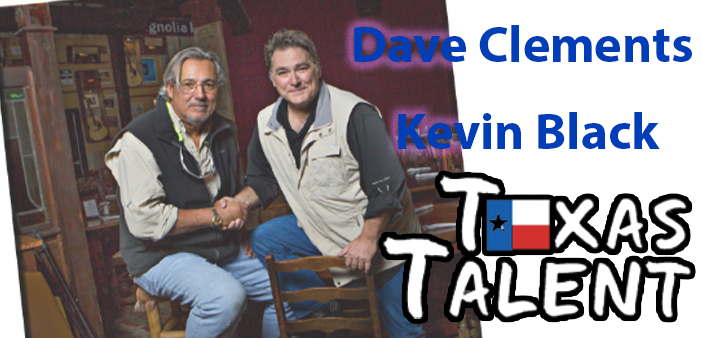
Texas is replete with arts communities, offering the state’s art lovers much to choose from. The difficulty, however, is navigating the Lone Star State’s endless highways just to get from, say, Dallas to Marfa (eight hours…). Fortunately, the state also has numerous art festivals that allow visitors to find all their art in one place.
One of the best of these festivals is The WoodlandsWaterway Arts Festival, which, following an extensive jury selection process, features some 200 talented artists from Texas and (well) beyond. In this special edition of (Mostly)Texas Talent, we highlight three artists appearing at TheWoodlands Waterway Arts Festival: Christina Smith, the Festival’s 2020 “Featured Artist”; ceramicist Debra Steidel, from Wimberley, Texas; and sculptor/jeweler Rita MarieRoss, from Austin, Texas.
Note: The Woodland Waterway Art Festival is typically scheduled for early April. This year, however, coronavirus concerns have prompted festival organizers to postpone the festival. More information about the festival and TheWoodlands Arts Council can be found on their website: https://www.thewoodlandsartscouncil.org/.
Christina Smith grew up in Missouri, but she now lives and works in northwest Arkansas while also maintaining a busy art show schedule. This schedule includes this year’sThe Woodlands Waterway Arts Festival, where she was chosen as the Festival’s “Featured Artist.” This recognition provides additional well-deserved exposure to her work, which is characterized by the ability to capture “shadow and light, subtle turns and transitions, the true and complex structure of [wildlife and nature.]”

You took art classes in college, but you describe yourself as a self-taught artist. Were any of your art classes informative?
Not really (laughs). I took pottery, jewelry, and drawing classes, but instructors did not teach realism, at least not back in the 1970s. I work from a realist perspective, so that instruction was a bit foreign to me. Also, what makes my work different, I think, is the way I look at and see things, and they definitely didn’t teach me that.
How do you see things?

I am near-sighted, so I am naturally drawn to detail. I don’t do landscapes; I zoom in. I focus on natural elements, on details people might miss if they were walking by the bark of a tree, lichen, or a feather. I will study those things—the colors, the texture, the curvature. That’s part of my work.
As a self-taught artist, how did you teach yourself to look at those things?

My father was an engineer, and he was meticulous. My hand has also always been steady, and perhaps I got some of that from him. You need a steady hand to do detail. But, I think the biggest lesson I ever learned was not to give up. I’ve persisted, and it has allowed me to work through those challenges and become a better artist.
How long did it take you to be comfortable showing your work and advertising yourself as a professional artist?
Probably 10 years. It takes a lot of courage to put your work out there, to take that first step out of the studio. But I worked hard at it, and my work has gotten better in the 40-plus years I have been showing my work.
What attracts you to wildlife?
I grew up in Kansas City, Missouri, and my parents didn’t take me to many rural places. Of course, I had seen birds, and I loved them, but it really wasn’t until my 20s that I saw beautiful rural scenery: hills, mountains, forests. So to see the wildlife in nature is really special to me.

What artists have influenced you?
Sallie Middleton is one. She was from North Carolina, and early on I bought one of her books. She did opaque watercolors as I do, and she simply omitted the backgrounds. Until I saw her work, I didn’t realize that was possible. It freed me up, allowing me to focus on the composition and the details.
Tell us about your primary artistic media: gouache and pencil.
As I mentioned, I am a detail person, sousing transparent watercolor—which bleeds extensively—is not going to suit my style well. I work with little brushes that don’t hold much water. Gouache, an opaque watercolor, is what is right for me. In terms of using pencil, that’s an interesting story. All three of my children were in a band, and my oldest son played the French horn. Unfortunately, the French horn we had was old and beat up. One day, I was in Shreveport at an art show, and a couple walked into my booth, looked around, and told me they really liked my work. Turns out, they owned a music store. After some discussion, we agreed they would give me a new French horn—a$2,300 instrument—and I would create a painting with ducks. By this time, I was tired of doing ducks, so todo something new, I decided I would use the gouache for the ducks and use pencil for the rootwork and foliage. That’s the first work I did that way, and my son ended up getting a music scholarship with his new French horn.
You proved all at once that art and music education can pay!
That’s right.
You work and live in northwest Arkansas; do you ever paint Texas scenes?
Well, since you mention it, near The Woodlands is the W. Goodrich Jones State Forest. The

Forest is one of the few places where the endangered red-cockaded woodpecker lives. It’s an interesting bird, and I plan to paint it. That work will be in my booth at the Festival.

You clearly know the area. How many times have you shown your work in The Woodlands Waterway Arts Festival?
I’ve done the Festival 10-15 times. It is a pretty area, the show is well run, and I’ve been enough times that I will see friendly and familiar faces there.
You are the Featured Artist for this year’s Festival. What does that entail?
The Featured Artist agrees to donate a work to The Woodlands ArtCouncil’s VIP Preview & Art Dash Party, which typically takes place the night before the Festival. The artist, in turn, is featured on Festivalpromotional materials, is given a free hotel room for the Festival, and has a free booth space for two years.
Will your donated piece feature a bird?
Of course! It will depict scarlet tanagers, which are red birds, the same size as cardinals, but without the crest and black mask.
We’ve discussed birds a lot. What do you think explains their special appeal to artists and people who love art?
From an artistic perspective, they are interesting for many reasons: their character, colors, and shapes. But I think it’s universal–people are drawn to birds. I think some of it is that we would all like to fly, and it’s fascinating to watch creatures that can. I remember watching them as a child, seeing a young bird take a step out of the nest and, eventually, go into flight. It takes a lot of courage for them to take that step out of the nest, and I think that’s a quality we all can admire.


You are a self-taught artist. Describe how you developed a love of art.
I did a lot of art at an early age, drawing, and painting, but I just had an urge to use a potter’s wheel. At 18, that’s what I decided to do, so I bought a wheel, and I used the same wheel for 40 years before it gave out a few years ago.
Do you still have it?
Yes. It’s in a little shrine, sitting in the garden.
You’ve been doing art for your entire adult life. At what point in your career did you become a self-sustaining professional artist?
I started making a living—not a great living—as a professional artist in the 1980s. I was a mother with two children, and it wasn’t easy to be a mother and a professional artist, but when my children were a bit older, I was able to go out and do the art fairs and public galleries. Now, I do about two dozen shows a year.
Every show is different, but how do most art festivals work?
Typically, you’ll submit images of your work and your booth, and then you hope the selection panel picks you.
How much does it cost an artist to enter a festival?
It depends on the show, but for a good one, it will cost somewhere between $400 and $1,000. Of course, you have other expenses as well.
What makes for a good art festival?
Well, The Woodlands Festival is really nice. It has the support of the local community; the town is attractive; and, for the artists, practical things such as the proximity of restaurants and hotels can be important.

Are the festivals your primary source of art-related income, or do you get more from galleries and online sales?
About 90 percent of my sales come from art fairs, but that varies by artist.
Your work can be quite intricate and elaborate. Can that be conveyed effectively online?
I think it’s difficult. If people have seen my work in person, they can often pick out a piece they like online. But if they’ve never seen my work in person, I am not sure how much an online viewer is able to assess the worth of the art, which is more than the sum of the work and materials.
Why is glass preferable specifically for the lids?
I like the translucency of glass. My vision was to permit light to come through and have people see the light interact with the piece. What are some of your influences with glass? Emile Galle and Rene Lalique. They used a similar technique for casting the glass, very different from hand-blown glass. Lalique was part of the Art Nouveau and Art Deco movements. Your work has Art Nouveau elements.
What appeals to you about that style?
The elegance of the forms. The forms are organic, inspired by nature. I believe nature is endlessly inspiring, and it is where I get most of my ideas.
Speaking of materials, describe the different ceramic materials you employ.
I use several different clays. I use porcelain; I use white stoneware, which I blend with porcelain for my vessels; and I use a fiber clay, which I also blend with porcelain for some of the larger sculpted pieces. In the last five years or so, I began working with a glass foundry to make the lids for my vessels. I make the original lid pieces out of clay, and I send that to the foundry, then they use a lost-wax process to replicate the lids using glass.
Why is glass preferable specifically for the lids?
I like the translucency of glass. My vision was to permit light to come through and have people see the light interact with the piece.
What are some of your influences with glass?
Emile Galle and Rene Lalique. They used a similar technique for casting the glass, very different from hand-blown glass. Lalique was part of the Art Nouveau and Art Deco movements.

Your work has Art Nouveau elements. What appeals to you about that style?
The elegance of the forms. The forms are organic, inspired by nature. I believe nature is endlessly inspiring, and it is where I get most of my ideas.

You grew up in a small Midwestern town. What kind of support was provided for the arts?
I was fortunate because our school had an amazing arts program. I was able to do jewelry, loom weaving, leather, and painting. We also had amazing teachers.
How did you pursue art following high school?

I found a local mentor who taught me how to cut stones and offered a few silversmithing techniques. I was hooked! Shortly thereafter, I moved to Athens, Ohio, and my neighbor taught me how to weave baskets. Much of my work reflects those experiences.
In 1983, you moved from Ohio to Texas. How are the two states different artistically?
The weather in Texas allows for more outdoor art shows. For me, though, the biggest impact about Texas was meeting metal sculptor Daryl Colburn—interestingly, at an outdoor art festival in Austin, Texas.
Tell us about the influence he had on you and the working relationship the two of you forged.
When I met Daryl, I said, “This is the person who will teach me sculpture.” Of course, he didn’t know that, but I did! I was doing jewelry and baskets at the time, but Daryl suggested I weave copper wire. Once I began, there was no turning back. Daryl passed away in 2011, but he influenced my process extensively. We opened a few art galleries together, the most notable probably being Laughing at the Sun in Austin.

At what point do you think you became a “professional artist” as opposed to an amateur artist or apprentice?
I have been working in metal since the late 1970s and teaching jewelry classes in my studio. But sometime around 2003, I think, I had developed into a fully professional artist. It takes a while: you have to pay your dues, do something long enough to have a context for your work, and know where your creativity comes from. Eventually, you develop your own style and people recognize your work.
Your style, particularly in its intricacy, is distinctive, but you utilize different media and forms. What inspires your artistic diversity?

Nature moves me the most. As an example, spirals occur in nature, and you see a lot of those forms in my work. I also incorporate emotions into my work. Daryl encouraged me: “Rita, if you can put emotion into your work, you will never be bored because you are expressing your own creativity.” Nature, with its colors, forms, and textures, inspires my work, physically and emotionally. I am always experimenting, looking for new ways to combine thoughts and materials.
Tell us about the materials you use for your sculptures.

I mostly use recycled copper wire and color the metal with acid patinas and metallic paints. I also like to incorporate aluminum to add some white in a piece. Also, the aluminum is very light, which is helpful when working with some of the larger sculptures.
What materials work best for your jewelry?
Well, I used sterling silver predominantly for many years, but about six years ago, I took an intensive workshop on Argentium silver. On the second day of that workshop, I said, “That’s it. I am getting rid of all my sterling silver and using Argentium!” I love it so much, I became a certified instructor. Argentium is tarnish-resistant and is fused instead of soldered.
How many art shows do you typically participate in annually?
When I began doing larger pieces and running a gallery, it wasn’t easy to do the art shows. But I am moving back into that, and last year I won three awards at shows. So, I have a few shows lined up for the spring, and I am very excited about the SculptFest in Round Rock, Art City Austin, and The Woodlands Waterway Arts Festival. I love art, and I love seeing how it changes people.

How has art changed you?
Sometimes I’ll get frazzled when I am working on a piece, but I look around, take all the art in, and it has a calming effect. People come into the studio or booth to view the work and they just slow down. It happened to me, and I hope what people experience while viewing my work is a sense of peace, curiosity, or just a moment to be absorbed in something completely.




